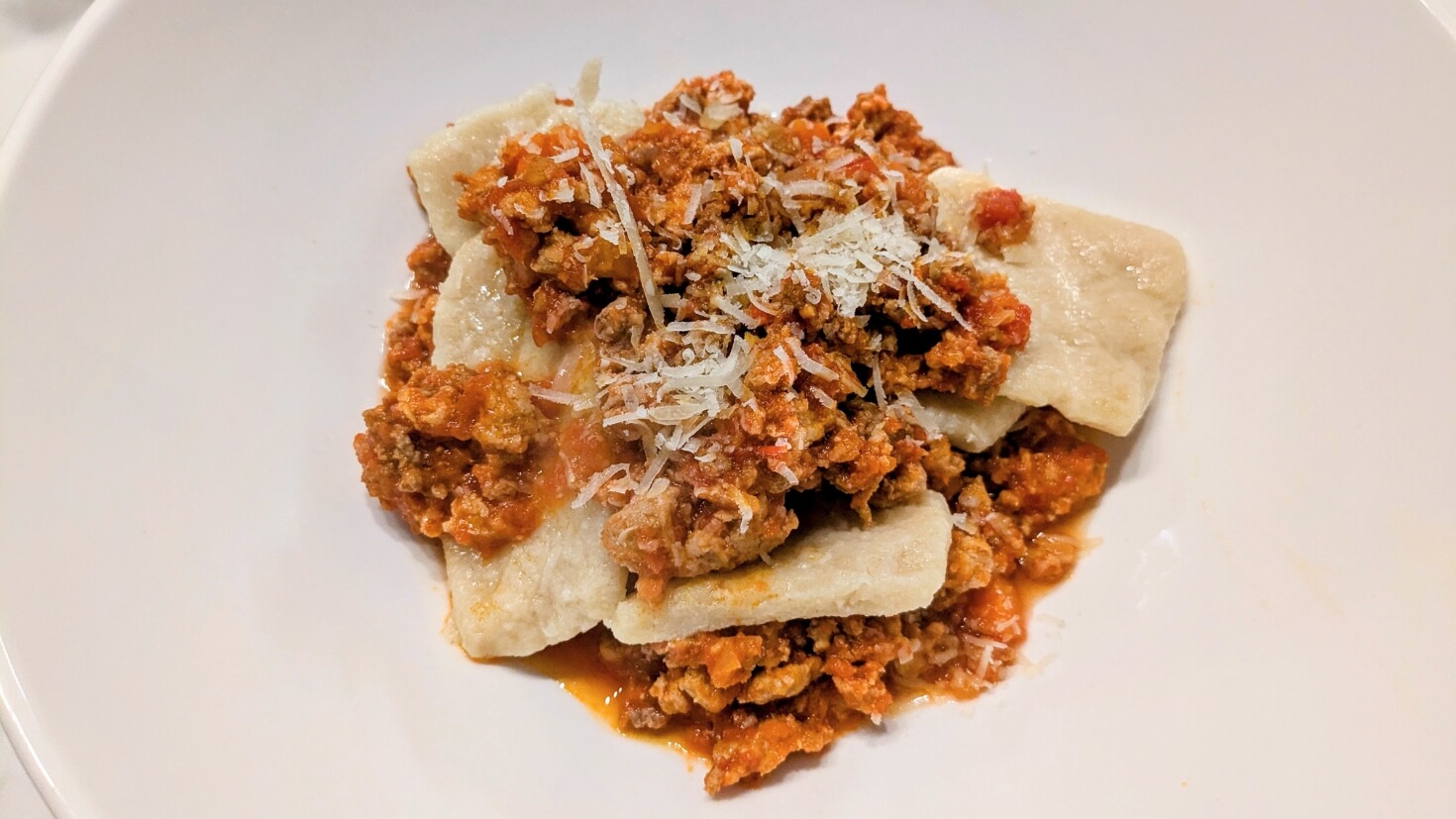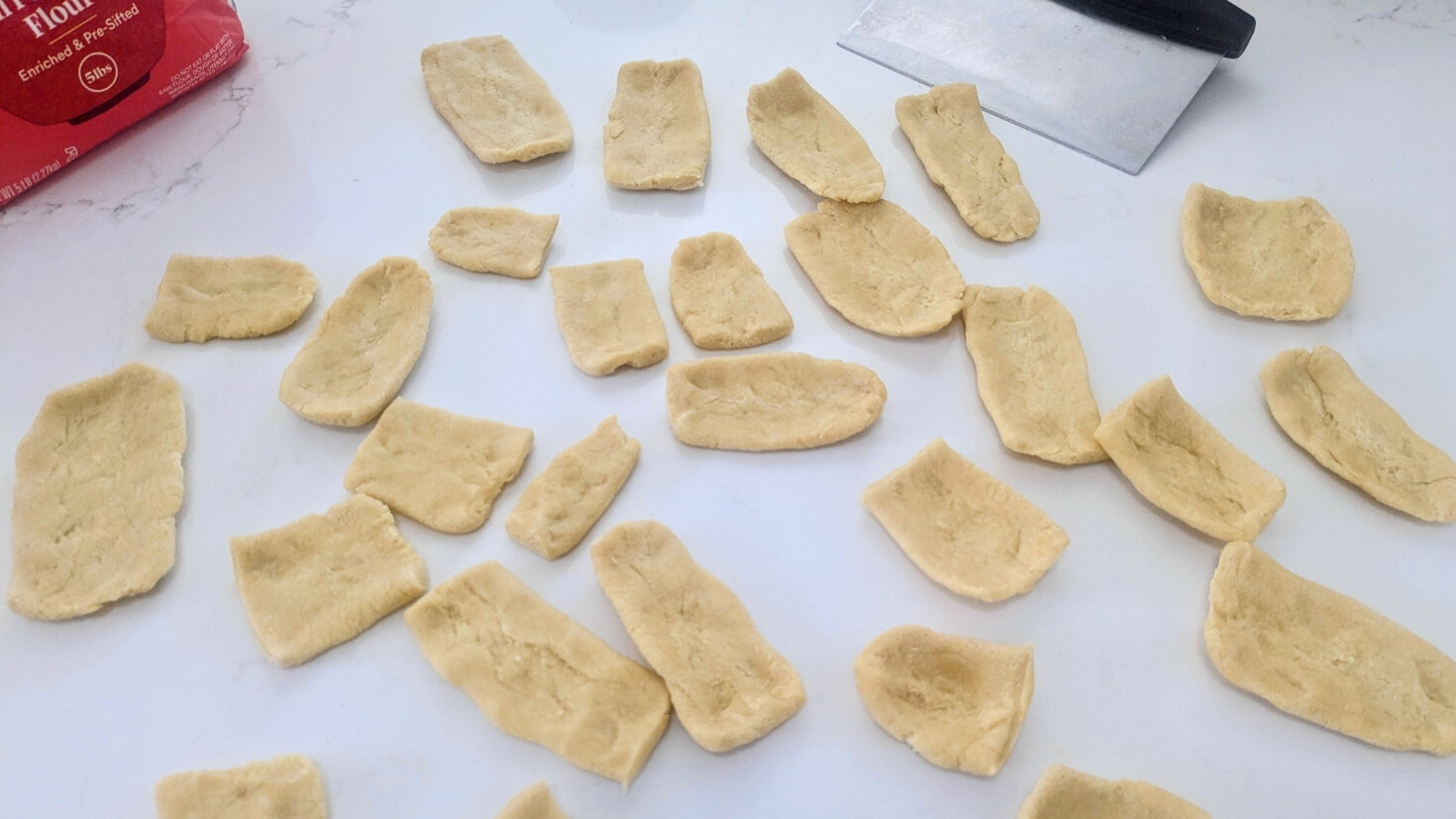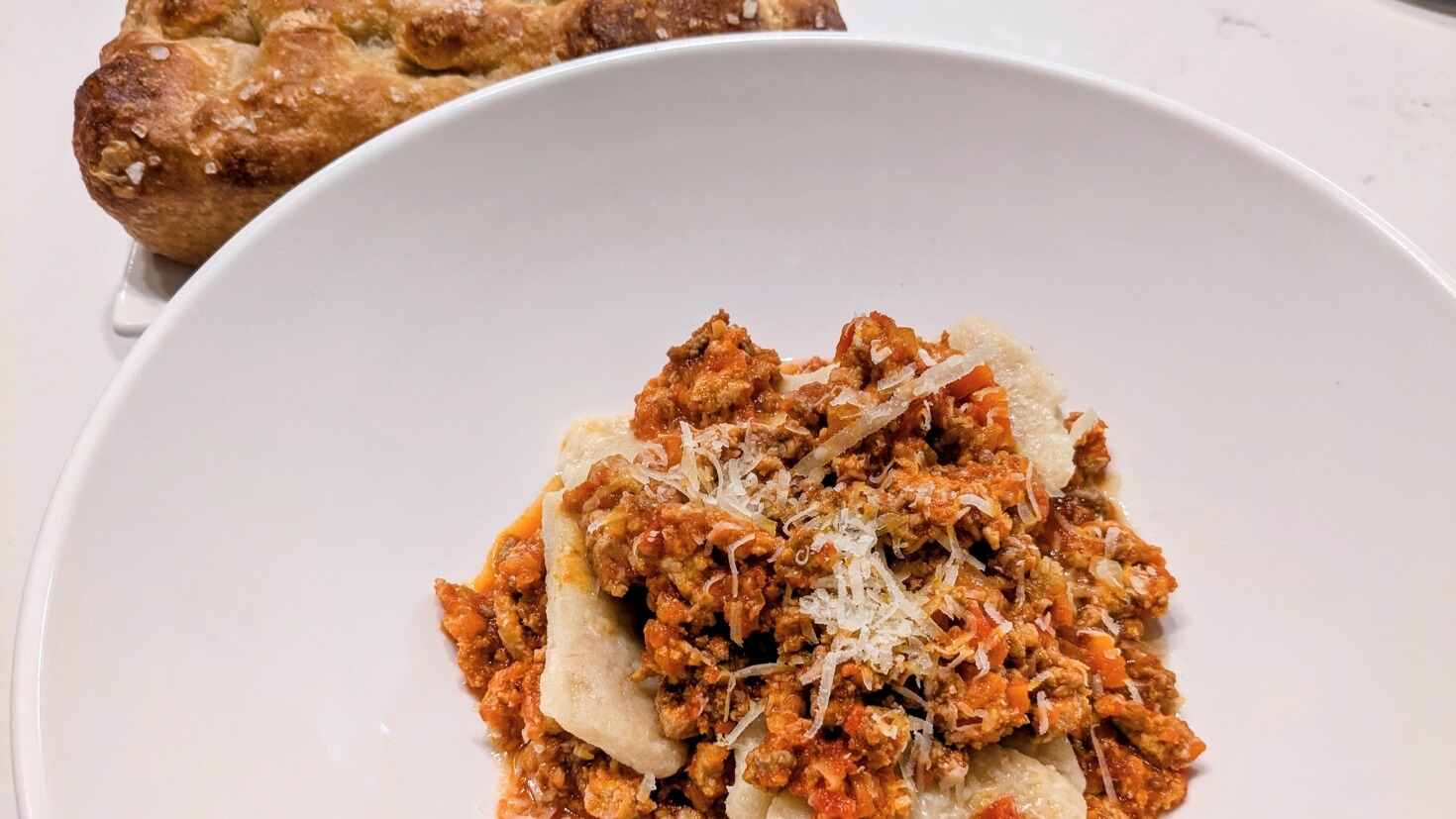Parmatieddi Recipe: Hand-Rolled Pasta for Palm Sunday
 Jump to Recipe
Jump to Recipe
I didn’t grow up with a Palm Sunday food tradition, but this year I wanted to start one. Parmatieddi is a hand-rolled pasta from Teggiano in southern Italy, shaped to resemble palm leaves. Palm Sunday is the day that marks Jesus’s entry into Jerusalem and the start of Holy Week, the seven days leading up to Easter. The name comes from parma, meaning palm, and refers either to the day itself or to the shape of the pasta.
The dish didn’t go perfectly. The dough was too dry, the pasta stayed firm (even after cooking for 20 minutes), and my pieces didn’t really look like palm leaves. I’m still glad I made it. Trying is part of the tradition, too, and sharing the imperfect parts is part of what Evercooked is all about: trying, learning, and sharing.
Although it’s Lent, parmatieddi is typically served with a rich meat ragu. Palm Sunday is often celebrated as a joyful pause before the quiet reflection of Good Friday, and this celebratory meal reflects that. The sauce at least turned out beautifully; it was slow-cooked and really satisfying.
Note Before the Recipe:
This version of parmatieddi is a starting point. My first attempt didn’t go perfectly. The dough was too dry, the pasta was shaped too thickly, and they never softened as much as I would’ve liked when cooked. I’m sharing it anyway because that’s part of the process. If you try this, I hope you’ll see it as a chance to connect with a beautiful tradition, to adjust as needed, and maybe to return to it again next year.
Aim for a dough that isn’t too dry, and stretch the pieces fairly thin so they become delicate after cooking. It is worth trying any time of the year because this is one of the simplest handmade pasta techniques I’ve ever seen.
Parmatieddi (Palm Sunday Pasta)
This traditional pasta is shaped by hand and typically served with meat sauce on Palm Sunday. This version uses semolina flour, but you can use all-purpose if that’s what you have on hand. I served it with homemade focaccia, too, to dip into the delicious ragu. Here is a recipe for a simple meat ragu.
Makes enough for about 4 servings.
Ingredients
- 375g (about 2 1/2 cups) semolina flour (or substitute all-purpose flour)
- 150g to 175g (2/3 to 3/4 cup) room temperature water
- 1 tablespoon (15 ml) extra-virgin olive oil
- 1/2 teaspoon salt
Instructions
-
Make the dough: Combine the flour, salt, water (start with 150g and add more as needed), and olive oil in a stand mixer with a dough hook or mix by hand. Knead until the dough is smooth, about 3 minutes by hand if using a mixer to bring it together. It should feel firm but pliable.
-
Rest the dough: Form dough into a disk and wrap in plastic wrap. Let the dough rest at room temperature for 30 minutes.

-
Shape the pasta: Flour the work surface and cut off a portion of dough and roll it into a rope about 1 inch thick. Cut into small pieces (roughly 2 or so inches wide). To shape each piece, press it with three fingers, dragging it slightly across your work surface to flatten and stretch. You can gently elongate the shape a little more by hand if needed. The final shape should be thin and curved.


-
Cook the pasta: Bring a pot of salted water to a boil. Add the pasta and cook until softened. This can take anywhere from 8 to 20 minutes depending on thickness. Begin checking at 8 minutes, then check every few minutes after that until the texture is soft but still holds together.
-
Serve: Drain and toss with sauce and plenty of grated Parmesan cheese. This pasta is traditionally paired with a meat ragu but would work with your favorite sauce. Try this simple meat ragu.
